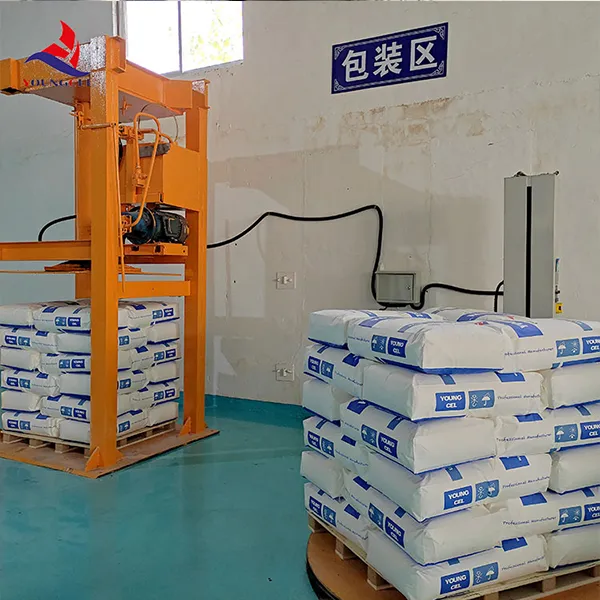Understanding MHEC Powder A Versatile Additive in the Construction Industry
MHEC, or Methyl Hydroxyethyl Cellulose, is a water-soluble polymer derived from cellulose, which is a natural polymer found in the cell walls of plants. This multifunctional additive has gained prominence in the construction industry, particularly in the formulation of mortars, plasters, tile adhesives, and other cement-based products. This article delves into the properties, applications, and benefits of MHEC powder, highlighting why it is an essential component in modern construction materials.
Properties of MHEC Powder
MHEC powder exhibits several key properties that make it attractive for use in various applications. Firstly, it possesses excellent water retention capabilities, which is crucial for maintaining the workability of cement-based mixtures. By preventing premature drying, MHEC allows for extended open time and enhances the bonding strength of the materials.
Secondly, MHEC is known for its high viscosity, which contributes to improved thixotropic behavior in the pastes and mortars it is mixed with. This means that the material will flow easily when subjected to stress (like stirring or troweling), but will revert to a thicker consistency when allowed to rest. This allows for easier application while minimizing the risks of sagging or slumping once applied.
Finally, MHEC is non-toxic and environmentally friendly, making it suitable for a wide range of applications, including residential and commercial projects. Its bio-based origin adds to its appeal, as sustainability continues to be a key consideration in the construction sector.
Applications of MHEC Powder
MHEC powder is primarily used as a thickening agent and a binder in various construction materials. Here are some of its common applications
1. Tile Adhesives MHEC enhances the adhesion and open time of tile adhesives, ensuring that tiles can be repositioned during installation without compromising the bond. This is particularly important in vertical applications, where sagging can be a concern.
mhec powder

2. Mortars and Plasters The water-retaining properties of MHEC are utilized in conventional and polymer-modified mortars and plasters. By maintaining moisture levels, MHEC helps to improve the curing process, contributing to higher strength and durability of the finished product.
3. Self-Leveling Compounds In self-leveling floor compounds, MHEC aids in achieving a smooth, consistent surface by improving flow and leveling properties while also preventing excessive shrinking during the drying process.
4. Grouts MHEC is used in various grout formulations to enhance workability and prevent segregation. Its ability to retain water ensures that grouts can be applied easily and finish smoothly.
5. Putty and Joint Fillers In putties and fillers, MHEC provides thixotropic behavior, enhancing application performance and ensuring that the filler remains in place without sagging or running off vertical surfaces.
Benefits of MHEC Powder
Integrating MHEC powder into construction formulations offers numerous benefits. Its ability to improve the workability and adhesion of various materials is invaluable, especially for professional contractors who require reliable performance in their applications. Additionally, the enhanced water retention helps mitigate issues related to cracking and ensures the longevity of the finished product.
Moreover, MHEC contributes to improved aesthetic outcomes, providing smooth finishes and uniform textures for various applications. Its versatility and compatibility with a range of other additives make it a staple ingredient across the construction industry.
Conclusion
As the construction industry continues to evolve, the demand for high-performance materials that are both effective and sustainable is on the rise. MHEC powder has emerged as a vital component in meeting these demands, offering a multitude of benefits that enhance the quality and performance of various construction products. Its unique properties not only contribute to improved workability and adhesion but also support eco-friendly practices. As builders and manufacturers seek to optimize their formulations, MHEC powder will likely continue to play a significant role in shaping modern construction solutions.
-
Rdp Powder: Key Considerations for Wholesalers in the Building Materials IndustryNewsJul.08,2025
-
Key Considerations for Wholesalers: Navigating the World of Hpmc - Based ProductsNewsJul.08,2025
-
Hpmc Detergent: Key Considerations for WholesalersNewsJul.08,2025
-
Key Considerations for Wholesalers: China Hpmc For Tile Adhesive, Coating Additives, Concrete Additives, and MoreNewsJul.08,2025
-
Crucial Considerations for Wholesalers: Navigating the World of Construction MaterialsNewsJul.08,2025
-
Key Considerations for Wholesalers Sourcing Additive For Cement, Additive For Concrete, Additive For Putty from Additive Manufacturer Shijiazhuang Gaocheng District Yongfeng Cellulose Co., Ltd.NewsJul.08,2025




